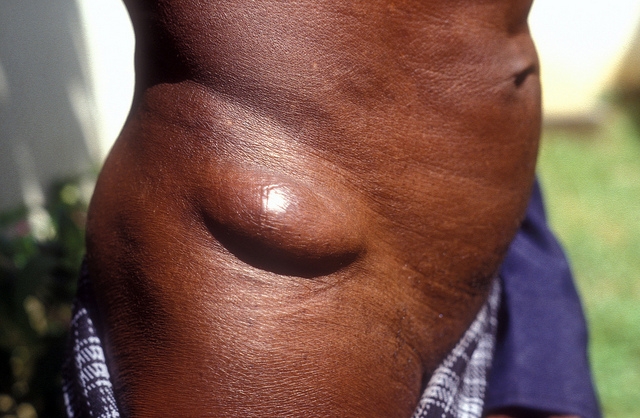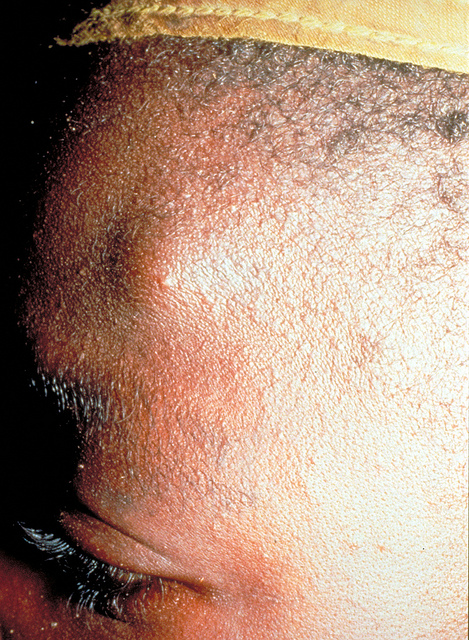Fun Facts
Check out this interesting video from Animal Planet about the
disease
Onchocerciasis: http://youtu.be/QpVF9EnZFnw
Onchocerca volvulus is a very exciting parasite with many
interesting facts! Here are just a few that will make you want
to deepen your knowledge of this parasite even more!
This parasite can affect different parts of the human body
depending on where it is located geographically.
In Africa most
of the ‘bites’ occur below the waist around the pelvic area.
Another parasite that causes swelling below the waist is
Brugia malayi, which causes the common diease known as
elephantitis.
These areas of swollen skin are often called ‘hanging groins’ in
Africa which is caused by the loss of skin elasticity which
causes the skin to hang. This parasite is also known to cause
hernias in females in Africa as well.
Africa most
of the ‘bites’ occur below the waist around the pelvic area.
Another parasite that causes swelling below the waist is
Brugia malayi, which causes the common diease known as
elephantitis.
These areas of swollen skin are often called ‘hanging groins’ in
Africa which is caused by the loss of skin elasticity which
causes the skin to hang. This parasite is also known to cause
hernias in females in Africa as well.

This parasite was most likely carried by African slaves before
it reached Central America. In Central America these regions of
inflammation are usually found above the waist in areas of the
neck and head. These regions are again based on the preference
of the flies ‘bite’ in different geographical areas. All of these skin lumps are usually benign with disfigurement but cause
no pain or unwell health.
After learning about how and where this parasite can host on
you, How can you get rid of this terrible parasite?
There are several studies being conducted today to help find a
cure for Onchocerciasis which is the disease of Onchocerca
volvulus. Today, the most common treatment is chemotherapy with
the prescription drug Ivermectin which is used for ringworm
infections. There are currently no drugs made specifically for
Onchocerciasis. There are also many campaigns in places such as
Africa and Central America where Onchocerciasis is most commonly
found in that help raise awareness and protect the people living
in these areas (Schmidt 2009).
While you were reading, did you find a word that confused you? No
worries! Go to the
Glossary Page for definitions.